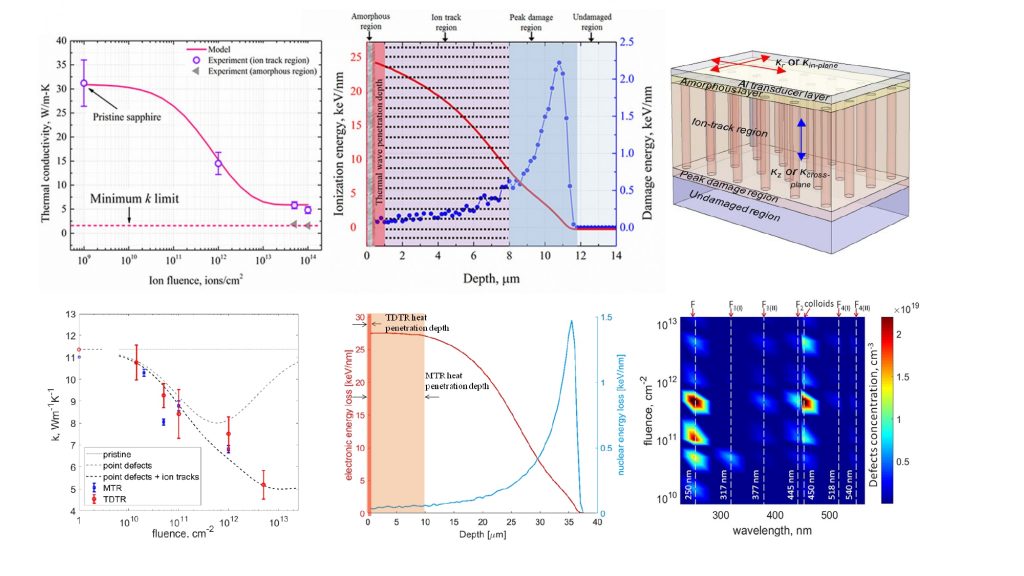Shedding a new light on nano- and micro- scale thermal transport in ion irradiated materials by advanced laser metrology

What’s new: Advanced subsurface heat conduction measurement results published in Journal of Applied Physics, Nuclear Instruments and Methods in Physics Research Section B, and AIP Advances.
Who is involved: Associate Professor Zhandos Utegulov, Postdoctoral Research Scholars Azat Abdullaev and Ainur Koshkinbayeva of NU SSH Department of Physics.
Controlling thermal transport of materials on nano- and micro- meter scales is essential for tailoring materials to various thermal management applications ranging from nuclear and fusion reactors to thermoelectrics, nanoelectronics, electrochemical storage devices and biomedical technology. One way to tailor thermal transport properties on a small spatial depth scale is to bombard a material with high energy charged particles. While in general this method damages the material, irradiation with swift heavy ions (SHI) forms highly oriented latent tracks tuning materials’ thermal conductivity in a controlled fashion.

In radiation material science, SHIs are a special form of particle radiation for which electronic stopping dominates over nuclear stopping over small ion penetration depths. However, the impact of damage resulting from this inelastic electronic stopping of energetic ions on thermal transport is practically unknown. Unlike irradiations with low energy ions where electronic and nuclear stopping regimes are overlapped, in SHI irradiated insulators these two regimes are spatially separated with subsurface structural damage exhibited across nanoscale subsurface region.
To investigate the impact of SHIs on lattice phonon heat transport, Associate Professor Zhandos Utegulov with Postdoctoral Research Scholars Azat Abdullaev and Ainur Koshkinbayeva of NU SSH Department of Physics performed nano- and micro- meter resolved measurements using advanced non-contact femtosecond pulse laser-based pump-probe technique called time-domain thermoreflectance (TDTR) and continuum laser wave modulated thermoreflectance (MTR), respectively. Together with colleagues from USA, South Africa and Russia, they have revealed two distinct regions of thermal conductivity degradation in SHI irradiated sapphire and shed new light on the behavior of thermal transport in SHI irradiated alkali halide crystals.
Owing to unique capabilities of TDTR and MTR techniques, the authors demonstrated measurements of heat transport on the hundreds of nanometers to micrometers depth of ion irradiated materials supported with structural analysis using optical spectroscopy and high resolution TEM. It was found that in sapphire samples SHI produce highly oriented ion tracks modifying their thermal conductivity both along in-plane and cross-plane directions, while in lithium fluoride mostly point defects contribute to phonon scattering. The experiments for sapphire revealed two regions with distinct reduced thermal conductivity values consistent with thermal transport model based on Debye approximation. One is an ion track region that is several micrometers thick. The other is sub-surface amorphous layer that only forms with high dose irradiation, and is only several tens of nanometers thick.
This study addresses the knowledge gap in understanding the effect of SHI irradiation on thermal transport. The work is important for further investigation in the general field of ion beam modification where thermal transport, electronic, optical, magnetic and electrochemical properties of insulating, dielectric, semiconductors and ceramics are tailored to meet the requirements of their respective applications.



